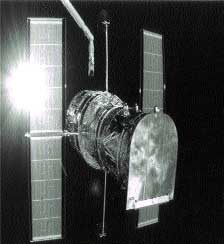Hey, how old are you?
 the standard cosmological model has been notably successful in explaining many of the observations in our universe. From the cosmic microwave background radiation to the genesis of matter, the model provides us with a simple and elegant tool for understanding the cosmos. Though there have been many refinements and extensions of the model, like the inflationary cosmologies, the underlying basis is still what is known as the Friedman cosmological model.
the standard cosmological model has been notably successful in explaining many of the observations in our universe. From the cosmic microwave background radiation to the genesis of matter, the model provides us with a simple and elegant tool for understanding the cosmos. Though there have been many refinements and extensions of the model, like the inflationary cosmologies, the underlying basis is still what is known as the Friedman cosmological model.
The universe is assumed to be isotropic and homogenous, which is expanding since the Big Bang. The rate of expansion is calculated by the Hubble constant, which has to be determined experimentally. The measurement of Hubble constant is difficult, and one of the original aims of the Hubble Space Telescope ( hst ) was in fact to provide a precise value of this constant. The last few years have seen many conflicting claims on the value of this constant as measured by different groups, though recently the values seem to be coming closer to each other. The value of this constant has a bearing on the age of the universe as well as many other important parameters.
But now comes news of another measurement from a ground-based telescope which can rule out the simplest cosmological model, the Einstein-de Sitter model, for our cosmos. In this model, which is favoured by inflationary cosmologies, the density of the universe is precisely such that the universe is flat. James Dunlop and his colleagues have reported the discovery of a galaxy 53 w 091 which has peculiar properties. The galaxy was first identified in a survey of radio galaxies and subsequently imaged in the visible and infrared regions. This itself was a major accomplishment since the galaxy is very faint (26 magnitude; one can see stars of about magnitude five with a naked eye, the brightest stars having a magnitude of 0).
The measurement was done using the largest optical telescope, the 10-metre Keck telescope in Hawaii. With spectroscopic analysis using the low resolution imaging spectrograph, the redshift of the galaxy was found to be 1.552 (redshift of an object is a measure of how fast the object is receding away from us. According to Hubble's law, the further the object, the larger is its velocity and hence larger is the redshift). This by itself is not unusual, but the age of the galaxy was where the surprise lay. The age of a galaxy is determined in several ways. The methods are not foolproof and there are many complications because of the effects of interstellar dust, uncertainty in evolution models of galaxies and other parameters. Dunlop and his colleagues were able to get around these ambiguities by directly comparing the absorption spectra to the visible and infrared. They further used three alternative models of galaxy evolution and came up with the best fit for the age of 53 w 091 to be about 3.5 gigayears (3.5 billion years).
This is where the problem starts. According to the standard model, the age of the universe at the redshift of 1.55 is much less than the age of the galaxy. The age of the universe at any redshift depends on the value of the Hubble constant. With a Hubble constant between 60-80 km/sec/Mpc, in the Einstein-de Sitter model, we get a universe which is only 2.5 gigayears old, at least a billion years younger than the galaxy in it! This is not the first time we have heard of the cosmological age problem. When the hst reported a Hubble constant of about 70 km/sec/Mpc, the age of the universe was obtained as about 10 gigayears, a good four-five billion years younger than the globular clusters. Similar problems are faced when one tries to reconcile quasars at large redshifts with the Hubble constant values.
Of course, one of the way out is that the simplest Einstein-de Sitter model is not valid in our universe. We could be living in a universe in which its density is dominated by the cosmological constant or is much lower than that in the Einstein-de Sitter universe. Either way, there is much excitement in the astrophysical community over the discovery of 53 w 091 and we will see similar discoveries reported soon. Together with the hst results, the field of cosmology is sure to be exciting in the next few years ( Nature , Vol 381, 1996).
